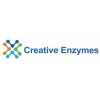Cat No.
NATE-1268
Description
Apyrase is found in all eukaryotes and some prokaryotes. Apyrase, from potato, has a crucial role in regulating growth and development. Apyrase is involved in the inactivation of synaptic ATP as a neurotransmitter following nerve stimulation and in the inhibition of ADP induced platelet aggregation to prevent thrombosis. Divalent metal ions are required for activity and best activity is observed with calcium ion at 5 mM.
Abbr
Apyrase, Recombinant (Potato)
Source
E. coli
Species
Potato
Form
50 mM NaCl, 20 mM MES (pH 6.5 25°C), 0.1 mM CaCl2, 1 mM DTT, 0.1% Tween-20 and 50% glycerol.
Bio-activity
3,000 units/mg
Concentration
500 units/ml
Molecular Mass
47 kDa
Unit Definition
One unit is defined as the amount of enzyme that catalyses the release of 1 μmol of inorganic phosphate from ATP (1 mM) in 1X Apyrase Reaction Buffer in 1 minute at 30°C in a total reaction of 50 μl.
Applications
Highly efficient degradation of ATP to AMP.
Removal of deoxynucleotides in DNA pyrosequencing between cycles.
Conversion of 5′ triphosphorylated RNA to ligatable monophosphorylated form that can be used for 5′ RNA adaptor ligation.
Conversion of 5′ triphosphorylated RNA to 5′ exonuclease XRN-1 sensitive monophosphorylated RNA.
Synonyms
ATP-diphosphatase; adenosine diphosphatase; ADPase; ATP diphosphohydrolase; apyrase; EC 3.6.1.5; 9000-95-7





